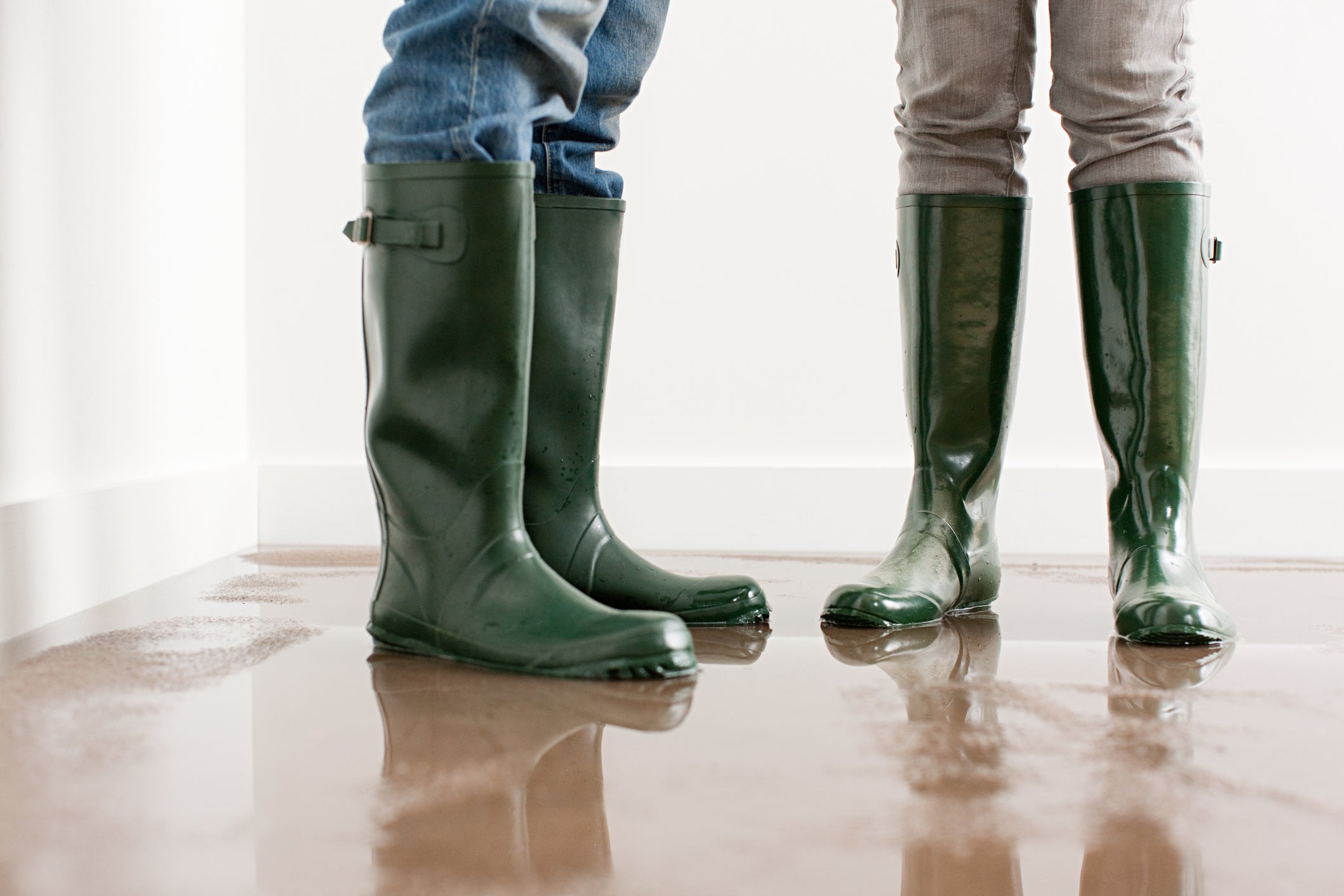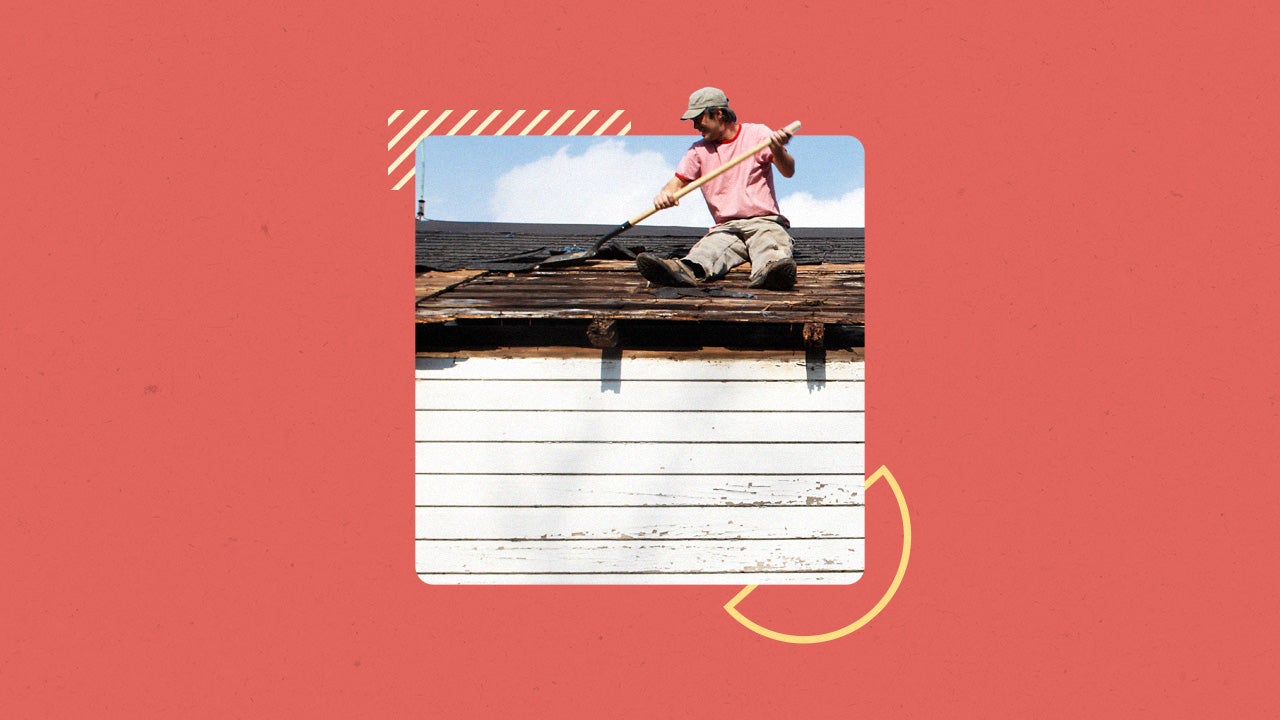How a loan can help weatherproof your home before extreme weather hits

The best time to fortify your home against severe weather is well before a blizzard, tropical storm, flood or hurricane threatens. Spending a few extra dollars on simple things like cleaning gutters and fixing water drainage spouts could minimize the effects of a major weather event. In contrast, deferred maintenance can lead to a larger bill for storm-related damage.
If you don’t have the cash to pay for weatherization and your extreme weather season is around the corner, knowing your home improvement loan options ahead of time will keep you from scrambling to prep.
Key Bankrate insights about extreme weather
- In the past 10 years, 57% of Americans have incurred costs due to extreme weather events, according to Bankrate’s Extreme Weather Survey.
- Among American homeowners, nearly 1 in 5 (19%) have taken on debt to pay for maintenance or other unexpected homeownership costs, according to Bankrate’s Unexpected Costs of Homeownership Survey.
- Only 24 percent of American homeowners have savings set aside specifically for home repairs and maintenance, according to Bankrate’s Unexpected Costs of Homeownership Survey.
- Only 44% of U.S. adults would use their savings to pay for an emergency expense of $1,000 or more, according to Bankrate’s Emergency Savings Report
Know your loan options before the storm warnings begin
If you’re low on savings, it’s tempting to put off home maintenance or prioritize other expenses besides weatherproofing. But the consequences of not securing your home against the extremes — especially if you live somewhere severe weather is common — may cost you far more than the monthly payment on a loan to make protective upgrades.
Bankrate’s Unexpected Costs of Homeownership Survey polled borrowers about how they covered unexpected maintenance and other costs. Here’s our take on the best to worst loan choices for preparing your home for bad weather.
1. Personal loans
A personal loan offers fast fixed-rate financing with a clear payoff date. You borrow the entire amount at once and, in many cases, have your cash to start upgrades within one business day of approval. Here are some personal loan pros that could explain why 33 percent of homeowners who took on debt to cover surprise homeownership expenses chose personal loans, according to Bankrate.
- Wide range of loan amounts. You can borrow as little as $1,000 for small projects like weather sealing your windows against rain or as much as $100,000 for a major home improvement loan to install a fire-resistant roof ahead of wildfire season.
- Simple qualification. You need a credit score and a stable income to qualify for a personal loan. Most personal loans are unsecured, which means you don’t need to go through extra approval hoops to confirm your collateral’s value.
- Fast access to cash. Many lenders offer same-day approvals and next-day funding, which is a big advantage if your local news shows extreme weather is on the way.
- Fixed rate and payment. You won’t have to worry about changes to your rate, and you can choose a payoff period ranging from one to seven years.
2. Credit cards
A credit card is the typical go-to for unexpected home expenses. In fact, 60 percent of homeowners who took on debt to pay for an unexpected expense used a credit card, Bankrate found. A credit card may be a good choice if:
- You want payment flexibility. You may want the lowest payment possible for a new home generator or storm windows if you’re short on cash. Personal loans don’t give you any monthly payment flexibility.
- You want to pay off and re-use the credit. If you want to make a series of upgrades over a period of time instead of all at once, a credit card gives you that flexibility. Credit cards are a type of revolving credit, which means you can use, pay and then use the credit again.
- You don’t need to max the card out. One drawback to revolving credit is its impact on your credit utilization ratio. Your credit score could take a big hit if you charge up to the limit — something that won’t happen with an installment loan like a personal loan.
3. Second mortgages
Among homeowners who took on debt to cover hidden costs of homeownership, 25 percent chose a second mortgage, according to Bankrate. Second mortgages typically come with lower rates than credit cards or personal loans and longer terms to keep your payment low. They should be the last choice to finance extreme weather upgrades since they put you at risk of losing your home if you default. However, they come with perks that make them sensible in some situations:
- Good for major extreme weather renovations. Do you live in the path of hurricanes, tornadoes, wildfires or winter storms? The cost of reinforcing everything from your home’s roof to its foundation could cost tens, if not hundreds, of thousands of dollars. If you have the equity, second mortgage lenders offer loan amounts above the $100k cap at most personal loan companies.
- Terms as long as 30 years. If you’re in your forever home, you can spread the cost of major upgrades out over decades, giving you a lower payment than other lending options.
- Interest may be tax-deductible. The interest on mortgages you take out for home improvements is generally tax deductible. You don’t have that benefit with other types of weatherization loans.
How much you need to spend on a roof may depend on insurance guidelines for weather extremes in your area. Jeff Ostrowski, Bankrate’s principal mortgage writer, saved up for a roof on his Florida home to make sure it met insurance guidelines.
“I decided to put a roof on my home not because I needed it but because windstorm insurers in Florida consider shingle roofs uninsurable when they hit 15 years. Mine was getting close that mark,” Ostrowski said.
Instead of borrowing money to pay for the new roof, Ostrowski developed a savings plan. “I knew a new roof was in my future, so I’d been keeping money in a high-yield savings account for that purpose. My second option would have been a home equity line of credit.”
An ounce of home maintenance could prevent big weather damage bills
Images of storm damage featured on news reports after natural disasters may keep you focused on preventing major property damage. However, nearly a third (32 percent) of U.S. homeowners polled in Bankrate’s Extreme Weather Survey have felt the impact in a way that may not make major headlines but can dramatically affect your budget: higher energy costs.
Spending a few hundred or thousand dollars on preventative maintenance could help you reduce storm damage costs and lower your utility bills. Before tackling major weatherization upgrades, budget to fix any of the following:
- Dirty or obstructed rain gutters. Heavy rains and dirty gutters are a recipe for water damage ranging from foundation cracks and basement flooding to A/C and window damage.
- Insulating your water pipes in winter. Extra water pipe insulation can prevent a costly burst pipe and the water damage that it can cause. An added bonus: Your heating bill may be lower since your water heater won’t have to work as hard to warm up water in cold pipes.
- Buy a generator. Nearly 1 in 4 (23 percent) of American homeowners have incurred costs due to spoiled food (due to a power outage, for example), according to Bankrate. If your insurance policy doesn’t offer spoiled food coverage, a home generator can keep the fridge and stove running if there’s an extended power outage.
- Check and fix window and door seals. Weatherstripping and caulk deteriorate over time, leaving gaps for water, cold and bugs to get in. Extra heat or cold equates to a high energy bill.
- Secure loose roof shingles with roof cement or replace them. Even one loose roof shingle can let in water or snow during a storm. Water can cause rot, mold and leaks. Snow and ice can get into your roof and damage the roof.
| Weatherproofing item | Average preventive cost | Average cost from damage |
|---|---|---|
| Cleaning dirty gutters | $119 to $234 | $1,200 to $5,500 |
| Insulating water pipes | $110 to $1,1100 (per 100 feet) | $200 to $3,000 |
| Home generator purchase | $500 to $3,000 for gas generator | $25 to $500 plus $50 to $100 a day to eat out if unable to cook at home |
| Reseal windows and doors | $25 to $250 | Depends on water ponding, bug infestation or energy cost |
| Fix loose roof shingles | $350 to $1,500 | $391 to $1,901 |
Consider these easy DIY projects to keep your heating and cooling systems running more efficiently.
- Clear space around your HVAC system by picking weeds and cutting plants growing around the air handler to keep it performing better.
- Grab some duct tape and patch up cracks and rips in attic or basement vents.
- Drain your water heater every year to keep sediment from accumulating on your heating coil.
Consider additional weatherproofing if your extreme weather season is approaching
There were 28 weather and climate disasters in 2023, according to the 2023 billion-dollar disaster report released by the NOAA National Centers for Environmental Information. That breaks the record of 22 in 2020.
Because many severe weather events hit quickly with little advance warning, planning your upgrades ahead of your severe weather season is critical.
In general, severe storms and flooding are most common in spring and summer, while hurricanes, wildfires and drought are common in the fall. Snowfall, ice and freezing temperatures also produce plenty of damage in winter.
If you live somewhere prone to severe weather, weatherproofing before the harsh weather starts will prevent you from scrambling at the last minute. Here’s a quick look at the cost of some of the higher-cost upgrades that could give you more protection from the worst weather conditions.
| Extreme weather type | Suggested upgrade | Average cost |
|---|---|---|
| Flooding |
|
|
| Hurricane | ||
| Tornado | Safe room installation | $3,000 to $9,500 |
| Wildfires |
|
|
| Winter | Food and water stockpile | 3 days of nonperishable food and water per person in your home |
Flooding protection
According to FEMA, one inch of water can cause $25,000 worth of damage. If you’re in a neighborhood prone to flooding, spending money to floodproof your home may be worth every penny.
- Regrade your yard. Water should drain away from, not toward, your home. If you notice water ponding around your home or in your yard, it may be time to regrade the yard to prevent flooding damage.
- Elevate your home. Raising your home three feet above the base flood elevation could give you extra flooding protection if you live in a flood plain. A bonus: It could reduce your flood insurance bill.
Other ways to protect your home against flooding include sealing the foundation, elevating utilities and appliances and getting a generator to keep your sump pump working even if the power goes out.
Hurricane protection
To guard your home against the devastating effects of hurricane winds that often exceed 100 mph, it’s best to focus on the two areas of your home most vulnerable to wind damage: Your roof and windows.
- Install roof straps. Hurricane winds can easily rip a roof off your home, but properly installed straps can significantly reduce the risk. The straps attached to your walls and foundation give your roof extra resistance against upward wind pressure.
- Add storm panels or roll-down hurricane shutters. Shattered windows let rain and debris into your home, which can cause massive damage. Storm panel tracks can be installed permanently around your home, and the panels can be attached and removed as storms come and go.
You may be reimbursed for money you borrow or pay in cash to strengthen your home against the stresses of hurricane-force winds. Jeff Ostrowski got back a third of the $30,000 he spent to put a new roof on his Florida home.
“I was reimbursed for part of the cost by My Safe Florida Home, a program that gives homeowners up to $10,000 for spending up to $20,000 on hurricane hardening,” Ostrowski explained. “I heard about My Safe Florida Home from a combination of word of mouth — a neighbor who’s a contractor mentioned the program to me — and coverage of the program by Florida newspapers.”
One caveat: Don’t expect a quick or simple reimbursement process. “I started by requesting an inspection through the state program in the spring of 2023, reached out to state-approved contractors in the summer, had the work completed in late 2023 and received a state check in 2024. So it took almost a year from start to finish, and I had to phone the state’s 800 number multiple times for help navigating the process.”
Tornado protection
Tornadoes’ unpredictability combined with wind speeds that can top 200 mph makes it almost impossible to strengthen your home against them. If you live in Tornado Alley it may be worth considering building a safe room.
A safe room is a reinforced room or bunker made of concrete or steel away from windows and walls. According to the Federal Alliance for Safe Homes, they typically cost $3,000 to $9,500 to build and may be the only structure left standing if an EF-4 or EF-5 tornado comes to your neighborhood.
Wildfire protection
If you live in a fire-prone part of the country like California or Arizona, consider upgrading your house to help it fare better in a wildfire. If you didn’t spend the extra $1,827 to $44,888 the National Association of Home Builders suggests it costs to build a fireproof home, you may benefit from trying the following:
- Fireproof your roof. Consider replacing standard roof shingles with metal, slate concrete, and other fireproof material. You may want to add a fire-retardant coating for extra protection.
- Replace combustible materials with metal and other non-combustible materials. Consider replacing non-metal vent materials, instalingl a fire door or adding non-combustible siding on your home (like bricks or fiber cement). Cost varies based on where you live and the square footage of your home.
Winter protection
Although hurricanes, wildfires, and tornadoes receive a lot of media attention, winter storms have their own costly effects. From heavy snow collapsing roofs to snowmelt flooding, you’ll want to take some extra measures if you live in a severe winter weather part of the country.
To reduce damage, consider purchasing a generator to keep your fridge and heat on, insulating your pipes and taking the floodproofing measures already discussed.
Additionally, FEMA and the Red Cross recommend you have enough food and water on hand to supply each person in your household for at least three days. There’s always the risk that roads will be closed or heavy snow will prevent you from leaving your home. You may also lose power, which could spoil the food in your fridge. Stash bottled water and non-perishable edibles like canned food, trail mix, or health bars to sustain you while you want for the roads to clear.
Don’t forget to check your insurance coverage
Your insurance coverage plays a big role in how much you need to pay out of pocket for winter, wildfire, wind or flood damage. Flooding isn’t covered by most standard policies and 19 states plus Washington D.C. require a separate deductible for hurricane and wind coverage. The more coverage you have, the less you’ll have to borrow if you don’t have the cash to pay for the deductible.
You may also like

How to get flood insurance coverage and who needs it

5 types of mortgage loans for homebuyers

How your home can pay for emergency repairs



